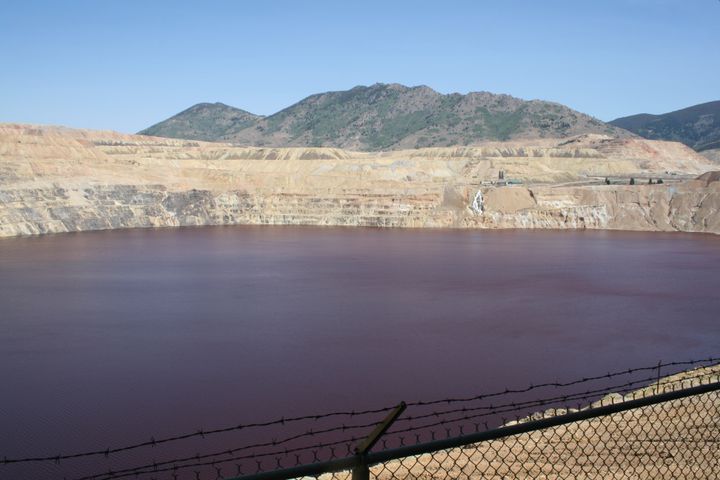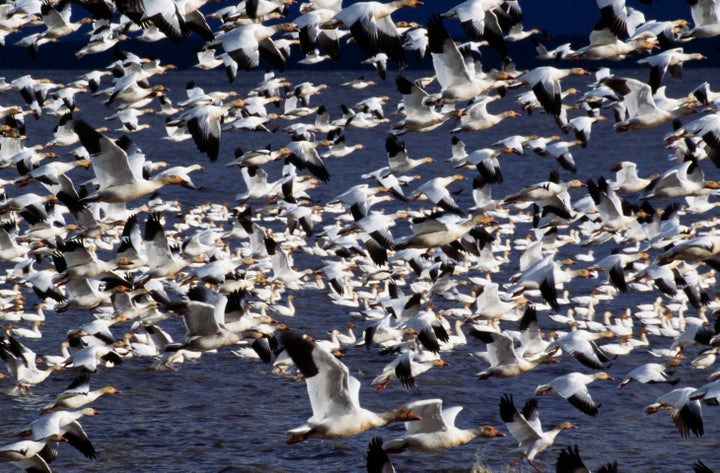Thousands of snow geese are likely dead after touching down on a former open-pit mine filled with acidic water.
Berkeley Pit served as a copper mine in Butte, Montana, from 1955 to 1982, The Washington Post reports. Groundwater began rising in the pit when it stopped operating and people turned off the water pumps from a nearby mine. The 675-acre pit is now 1,780 feet deep and full of toxic water.
Sulfuric acids and heavy metals have created a reddish stew that can be deadly for unwitting animals ― like snow geese ― that might drink it.

In 1995, more than 300 geese died from acid burns in the esophagus after landing in the pit and consuming the water, Justin Ringsak told The Huffington Post in an email. Ringsak is a former editor and writer for PitWatch, a publication dedicated to news about Berkeley Pit.
Since then, the parties responsible for managing the pit — mining company Montana Resources and oil company Atlantic Richfield Co. — have used methods like spotlights and loud noises to try to prevent birds from landing in it.
However, far more birds than usual appeared in Butte on Nov. 28. The city typically sees between 2,000 and 5,000 snow geese over the course of a year, but a snowstorm pushed about 25,000 of them over the area, according to The Associated Press. And try as they might, employees couldn’t prevent all those geese from landing.
Soon after, locals starting seeing dead and dying geese around town.

“The number of migrating geese that passed through this area and landed in the pit is unprecedented,” Mark Thompson, environmental affairs manager for Montana Resources, told HuffPost. “Although most geese left the pit and continued their migration, we estimate that several thousand snow geese did not leave and have not survived. This is a very unfortunate incident, and we are saddened and distressed to see that efforts to prevent these mortalities did not succeed.”
The estimate, he said, comes from images that drones and fixed-wing aircrafts have taken while flying over the area every day since Saturday.
Ringsak explained that assessing the death toll can be difficult because affected birds do not die immediately.
“The effects of consuming Pit water … can take some time to manifest in visible symptoms or death,” he said.

